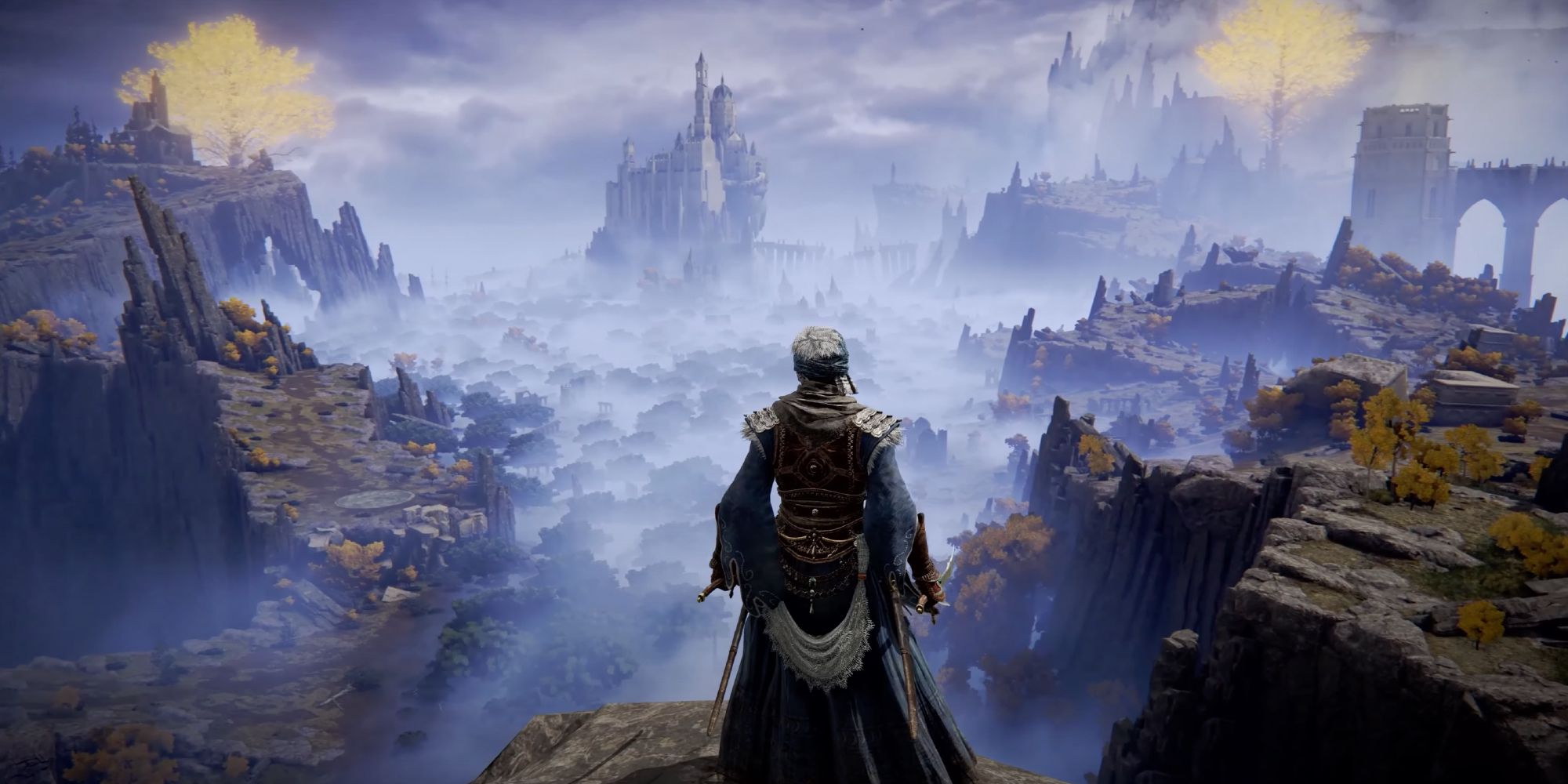The Elder Scrolls 6 is still a long ways away, but development influence spreads quickly in the games industry, and Bethesda could take some lessons from the latest FromSoftware project, Elden Ring. Bethesda and FromSoftware are known for creating two very different brands of RPG, but with Elden Ring's adoption of a genuine open world, the two become much easier to compare. While TES 6 should definitely avoid abandoning the identity molded by its predecessors, Elden Ring shows that there is a lot of room for growth following the 10 years since Skyrim first released.
Bethesda hasn't merely rested on its laurels since 2011, but the trajectories of the two developers are interesting in comparison. Fallout 4 and Fallout 76 have been released by Bethesda in the interim, and while 4 especially shares a lot of similarities to Skyrim, FromSoftware has had a much more prolific through line in the same time frame. Dark Souls came out not even two months before Skyrim, and both were endlessly compared as two different approaches to fantasy RPGs. Now, Elden Ring is Dark Souls, Bloodborne, and Sekiro combined, a culmination of FromSoftware's refinement of the Soulslike subgenre over the last decade.
There will certainly be many advancements on Skyrim in TES 6, but with the grand scope of Bethesda's games, it doesn't have the luxury of multiple iterations to build on. Each game in the Dark Souls trilogy, Bloodborne, and Sekiro all brought new mechanics to the now familiar formula in a way that makes Elden Ring's open world feel like a natural next step. The long hiatus of The Elder Scrolls has a bit more uncertainty, and will have to rely on outside sources, not just its predecessors, for design inspiration. Elden Ring isn't even out yet, but impressions from the Elden Ring closed network test already position it as a game that can carry on Dark Souls' industry-wide influence.
TES 6 Could Learn From Elden Ring's Density
Bethesda's games have been widely celebrated for their expansiveness. Todd Howard's famous "See that mountain? You can climb it," quote has been endlessly lampooned, but it's actually a good microcosm of Skyrim's world design. The massive playground is exciting and full of things to discover. But Elden Ring's design suggests The Elder Scrolls 6 may benefit from not being spread quite so thin. Luckily, Skyrim's map is already a bit smaller than Oblivion's, so Bethesda may be trending in the right direction, but it's still not quite as dense as Morrowind, which is still nearly everyone's favorite TES game. Many developers seem to be realizing that bigger doesn't necessarily equate to better, and Elden Ring shows how more deliberate world design could benefit TES 6.
Even Elden Ring's closed network test, estimated to be just a fraction of the full game, is absolutely packed with content. Not every location had a dedicated quest, but new things to explore around every corner made simply walking around a rewarding experience. TES often sequesters a dungeon in a remote place, which can be wonderfully mystical, but slightly reducing the long travel distances and making the environment a bit more deliberately crafted could make the journey as compelling as the destination. TES 6 should design its world to discourage fast travel as much as possible. Tamriel presumably has millions of denizens, and the practically empty expanses that The Elder Scrolls has utilized thus far don't help convey the illusion of a populated and intricate society.
TES 6 Could Adopt Elden Ring's Player Agency
To go along with a world that emphasizes emergent gameplay, The Elder Scrolls 6's mechanics could take some notes on player agency from Elden Ring. Fully adopting FromSoftware's quest log-less minimalism might be a step too far, but inspiration could be gleaned in regards to how much the game holds the player's hand. There are far too many NPCs to interact with in TES games to do away with a quest log entirely, but TES 6 could embrace more of Morrowind's ideas by getting rid of quest markers. Scrolling through a list of quests, selecting one, and following the marker on the compass takes away so much from the joy of exploring an open world. Quests can be designed to let players figure out where to go on their own, instead of simply following the HUD's signposts.
Markers don't have to be removed entirely, though, and can instead be put under the player's control. Alongside its open world, Elden Ring has brought a map to the Soulslike games. Sekiro technically has a world map, but it's hardly functional for navigation, instead helping players understand the world layout on a macro level. One of Elden Ring's parallels to Breath of the Wild is the ability for players to set custom markers on their map. Players can set a destination in Skyrim, but annotating the map with various symbols is immensely helpful when preoccupied with another task.
Elden Ring's Melee Variety Could Help TES 6
The Elder Scrolls is not short on different kinds of weapons, and even has plenty of unique items to find, but Elden Ring's varied melee animations show that TES 6 could use some more combat variety. In Skyrim, for instance, swinging a steel sword is the same as swinging a glass or ebony sword, with the only differences being stats. Elden Ring inherits the wide variety of weapons from Dark Souls, where each has a unique move set. Some may essentially be the same when boiled down mechanically, but even the ways that animations may differ can change how mechanically similar weapons play, and unique animations help individual items add some extra flair to a character. Combined with something like Elder Scrolls Online's weapon and armor styles, more melee variety could bring a whole new level of character customization to the series.
TES 6 doesn't need the laser focus on intense combat that Elden Ring has, but some more creativity for character builds focused on melee would be a nice iteration on Skyrim's rather bland and methodical hack-and-slash combat. The same can be said for all of the above - The Elder Scrolls shouldn't devolve into mimicry, but instead take inspiration from another fantasy RPG that has had the benefit of considerably more iterations since 2011. Skyrim's evergreen success is a testament to the series' broad appeal, but there's always room for improvement, and Elden Ring has a few mechanics that might make The Elder Scrolls 6 the most compelling TES game to date.




